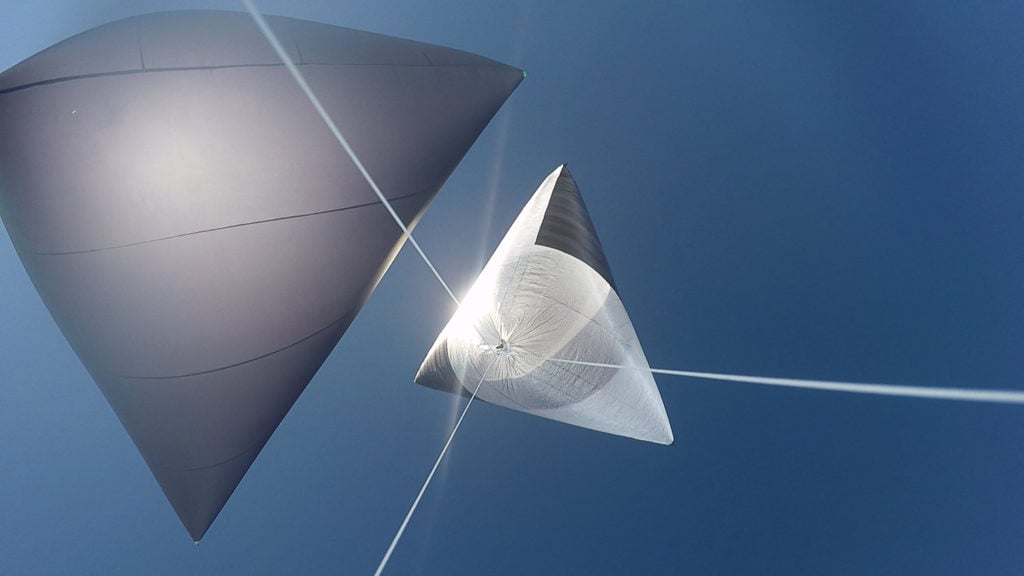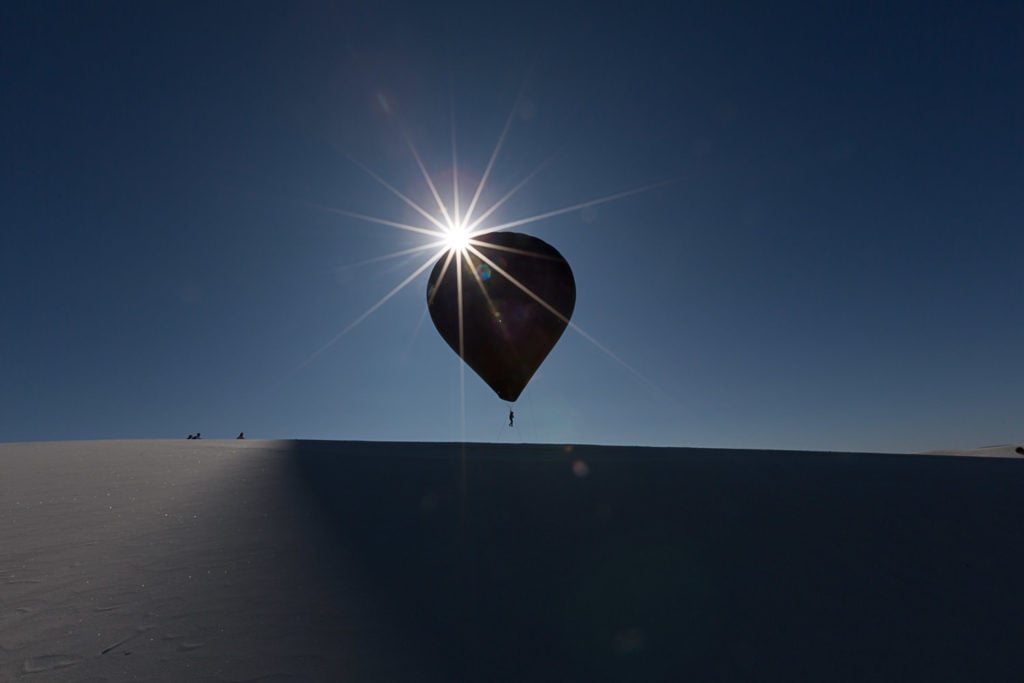Art World
Artist Tomás Saraceno Brings Experimental Emission-Free Air Travel to London
A new commission seeks collaborators and hackers in London.

A new commission seeks collaborators and hackers in London.

Alyssa Buffenstein

Working with an impressive list of collaborators, artist Tomás Saraceno has recently set the world records for the first and longest solar-powered flight with his ongoing Aerocene project, an art-meets-science experiment to create sculptures that float, fossil-fuel-free, on the earth’s jet streams.
This weekend, an open invitation calls on Londoners to help push the boundaries of Saraceno’s Aerocene Explorers even further.
The Argentinian-born, Berlin-based artist recently accepted the first Exhibition Road Commission, a new effort by the Exhibition Road Cultural Group in South Kensington, London. For the commission, 17 local cultural and educational institutions, including the Science Museum, Natural History Museum, Goethe Institut, and Serpentine Galleries, pool their resources to foster multidisciplinary artistic projects.
A jury chaired by Hans-Ulrich Obrist made a smart first choice in Saraceno, whose experimental Aerocene project benefits from the input of multidisciplinary thinkers.

A 2015 iteration of the Aerocene Explorer. Photo ©Studio Tomás Saraceno 2015
On November 26, the Aerocene Campus will take place at the Royal College of Art, open to anyone as long as they register in advance.
As an artist, Saraceno has an idealistic vision of pushing humanity to a place where it can more peacefully, and less harmfully, co-exist with nature; by inviting more and more collaborators from different fields, his ambitious aims seem possible.
“The first Aerocene Campus is an open invitation to explore, extend and imagine the Aerocene Epoch through the sculpture of the Aerocene Explorer,” reads the Aerocene Campus website.
“The Campus asks how community-driven practices with the Aerocene Explorer can inform environmental, social and mental ecologies in post-Anthropocenic worlds. On November 26th, experts from a wide range of disciplines will gather together for a full day of provocation, discussion, collaboration and ‘hacking’ to experiment with the Aerocene Explorer and to co-create the Aerocene epoch,”
More than just thinking about Aerocene, Saraceno wants his project hacked. For the Aerocene Hack 2, a team of “highly technical hackers” (“developers, designers, artists, data scientists, and creative technologists”) will work simultaneously, and partially in collaboration with, the Aerocene Campus, to prototype new versions of the Aerocene Explorer. The ultimate goal of the project is to create a sculpture that can journey around the world emission-free.
Is the Aerocene really the future? Find out more here about how to help make it happen.